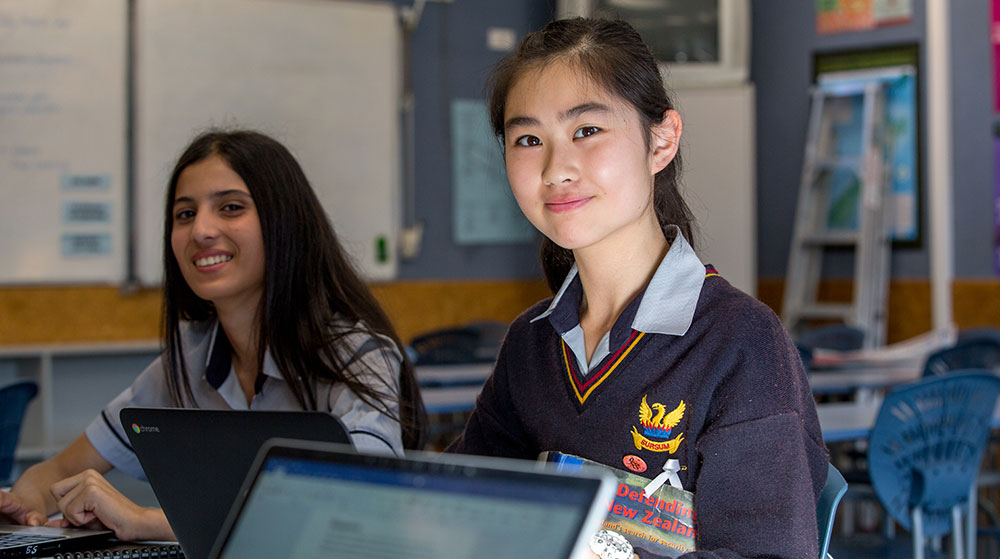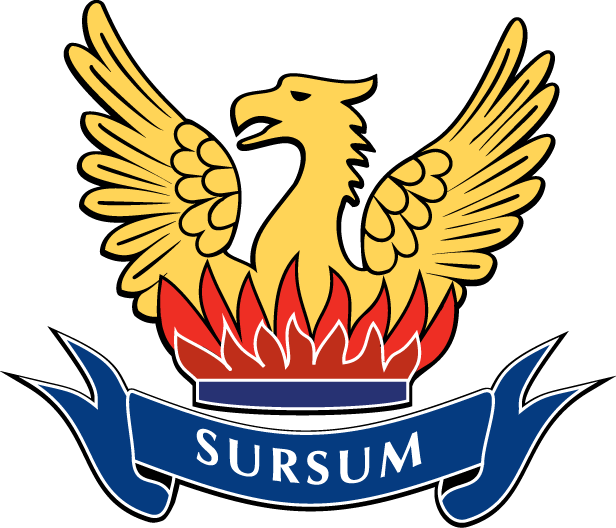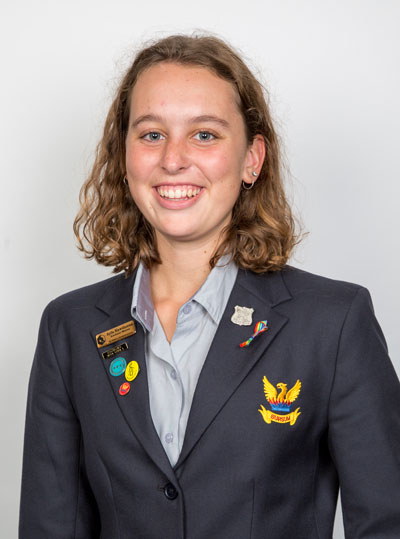Using Digital Technology to solve problems and equipping students with skills for the 21st century and beyond.

Department reflects the school mission statement in its policies and practices by aiming to “develop the personal potential, social responsibility and respect for individual and cultural differences of all students” at Mt Roskill Grammar School.
Digital Technologies is about teaching students the theory of how technology works, and how they can use that knowledge to solve problems and equipping students with skills for 21st century and beyond. Digital Technology includes a vast area of Computing and Programming that includes proficiency in Microsoft applications, Digital Design and Coding.
Students will gain confidence in using Technology to solve the problems and find solutions. At MRGS we teach a range of Digital Technology subjects and our students are ever enthusiastic to address the real world problems and come up with solutions. At MRGS we create the Technological future!
Courses and Pathways

Year 9 Digital Technology
Year 10 ICT
Year 11 Computer Science
Year 11 Digital Technology
Year 12 Computer Science
Year 12 Digital Technology
Year 13 Computer Science
Year 13 Digital Technology
Year 9 Digital Technology
Year 9 Digital Technology
Entry Requirements:
N/A
Junior Diploma Credits:
3
BYOD Recommendations:
N/A
Who is this course for?
N/A
Year 10 ICT
Year 10 ICT and Computer Science
Entry Requirements:
N/A
Credits:
There is the opportunity to gain 4 credits at NCEA Level 1.
BYOD Recommendations:
N/A
Who is this course for?
Students who enjoy problem solving and interested in learning and developing computing skills to create a range of outcomes.
Year 11 Computer Science
Year 11 Computer Science
Entry Requirements:
N/A
Credits:
20 Credits at Level 1
BYOD Recommendations:
Desktops are provided, may use own laptops for some units
Who is this course for?
Students with solid computing and maths skills who enjoy solving problems and writing computer programs. (You may only choose 1 of the 3 computer courses)
Achievement Standards:
AS 91071 1.41 Implement basic procedures to produce a specified digital information outcome INT
AS 91072 1.42 Demonstrate understanding of basic concepts of digital media INT
AS 91073 1.43 Implement basic procedures to produce a specified digital media outcome INT
AS 91074 1.44 Demonstrate understanding of basic concepts from computer science EXT
AS 91075 1.45 Construct a plan for a basic computer program for a specified task INT
AS 91076 1.46 Construct a basic computer program for a specified task INT
Year 11 Digital Technology
Year 11 Digital Technology
Entry Requirements:
N/A
Credits:
Up to 17 Credits at Level 1
BYOD Recommendations:
Desktops are provided, may use own laptops for some units
Who is this course for?
Students with solid computing and design skills who enjoy creative design. (You may only choose 1 of the 3 computer courses)
Achievement Standards:
AS 91053 1.10 Demonstrate understanding of design elements EXT
AS 91071 1.41 Implement basic procedures to produce a specified digital information outcome INT
AS 91073 1.43 Implement basic procedures to produce a specified digital media outcome INT
AS 91046 1.3 Use design ideas to produce a conceptual design for an outcome to address a brief INT
Level 1 US 5946 Use computer technology to create and deliver a presentation from given content
Year 12 Computer Science
Year 12 Computer Science
Entry Requirements:
12 Achievement Standard Computing credits at Level 1
Level 1 Literacy
Credits:
19 Credits at Level 2
BYOD Recommendations:
Desktops are provided, may use own laptops for some units
Who is this course for?
Students with solid computing and maths skills who enjoy solving problems. Students must have some computer programming skills. (You may only choose 1 of the 2 computer courses).
Achievement Standards:
AS 91367 2.40 Demonstrate understanding of advanced concepts of information management EXT
AS 91368 2.41 Implement advanced procedures to produce a specified digital information outcome INT
AS 91370 2.43 Implement advanced procedures to produce a specified digital media outcome INT
AS 91373 2.46 Construct an advanced computer program INT
Year 12 Digital Technology
Year 12 Digital Technology
Entry Requirements:
10 Achievement Standard Computing credits at Level 1
Level 1 Literacy
Credits:
Up to 17 Credits at Level 2
BYOD Recommendations:
Desktops are provided, may use own laptops for some units
Who is this course for?
Students with solid computing and design skills who enjoy solving problems and creative design. (You may only choose 1 of the 2 computer courses).
Achievement Standards:
AS 91367 2.4 Demonstrate understanding of basic concepts of information management EXT
AS 91368 2.41 Implement advanced procedures to produce a specified digital information outcome INT
AS 91356 2.3 Use design ideas to produce a conceptual design for an outcome to address a brief INT
AS 91370 2.43 Implement advanced procedures to produce a specified digital media outcome INT
Year 13 Computer Science
Year 13 Computer Science
Entry Requirements:
14 Achievement Standard Computing credits at Level 2, including AS91373 (programming) and the Level 2 external AS91367
Credits:
19 Credits at Level 3
BYOD Recommendations:
Desktops are provided, may use own laptops for some units
Who is this course for?
Students with solid computing and maths skills who enjoy solving problems. Students MUST have advanced computer programming skills prior to entry. (You may only choose 1 of the 2 computer courses).
Achievement Standards:
AS 91632 3.40 Demonstrate understanding of complex concepts of Information management EXT
AS 91633 3.41 Implement complex procedures to produce a specified digital information outcome INT
AS 91635 3.43 Implement complex procedures to produce a specified digital media outcome INT
AS 91637 3.46 Construct a complex computer program INT
Year 13 Digital Technology
Year 13 Digital Technology
Entry Requirements:
10 Achievement Standard credits in Level 2 Digital Technologies
Credits:
20 Credits at Level 3
BYOD Recommendations:
Desktops are provided, may use own laptops for some units
Who is this course for?
Students with solid computing and design skills who enjoy solving problems and creative design. Students must already have an advanced understanding of HTML and CSC. (You may only choose 1 of the 2 computer courses).
Achievement Standards:
AS 91610 3.3 Develop a conceptual design considering fitness for purpose in the broadest sense INT
AS 91632 3.40 Demonstrate understanding of complex concepts of information management EXT
AS 91633 3.41 Implement complex procedures to produce a specified digital information outcome INT
AS 91635 3.43 Implement complex procedures to produce a specified digital media outcome INT
Ayla Hawthorne
Subject I have taken: I am studying Computer Science at NCEA Level 3
Why am I studying this subject: I’m thinking of going on to study a computer science/arts conjoint at the University of Auckland next year, but I know that even if I choose another degree or pathway the skills I gain from this subject will still be useful for the future.
What this subject offers me: As well as a headstart on programming knowledge for university level computing, computer literacy is so important in a day and age where nearly everything is digitalised. Knowing your way around a computer and how to use software efficiently is essential in almost any job field.
Why I love this subject: I like problem solving, but computer science also has opportunities to be creative and think outside the box. Our assessments are real-world examples of what a client could need from someone in a computing role, and this industry focus really solidifies how useful the class is instead of learning something which doesn’t have any obvious impact.


